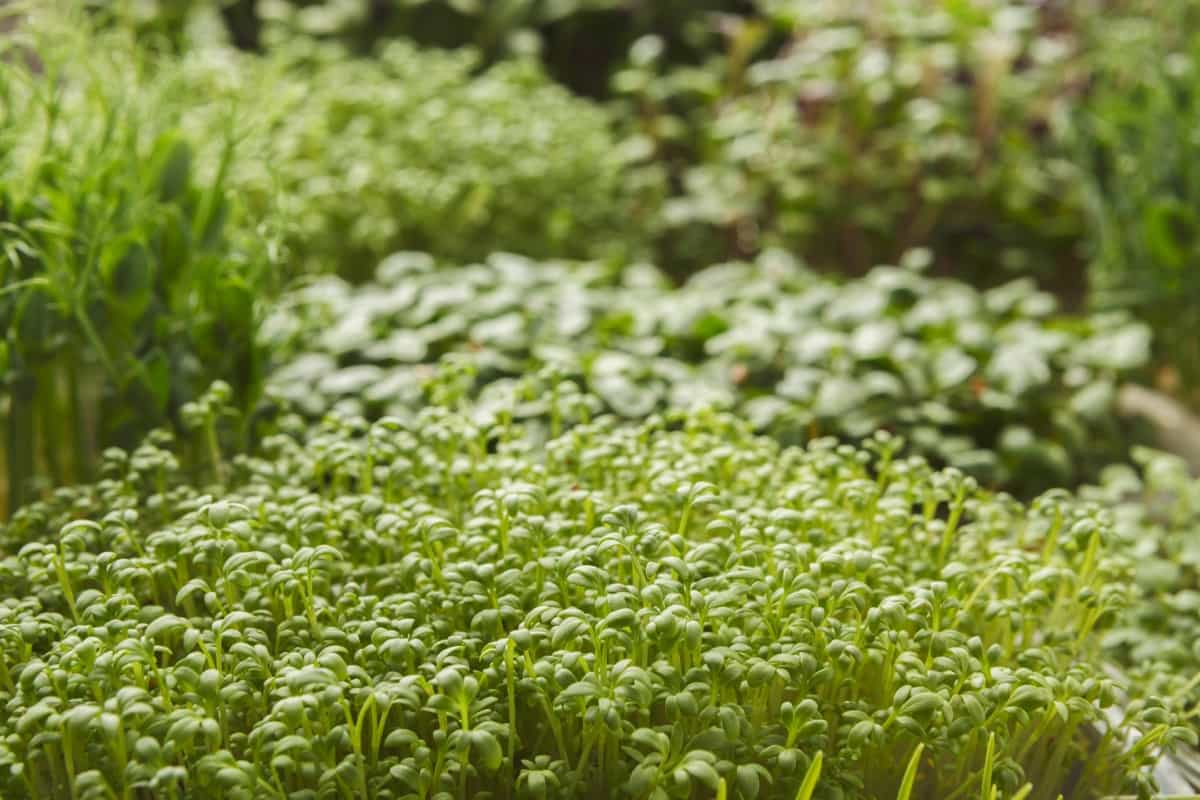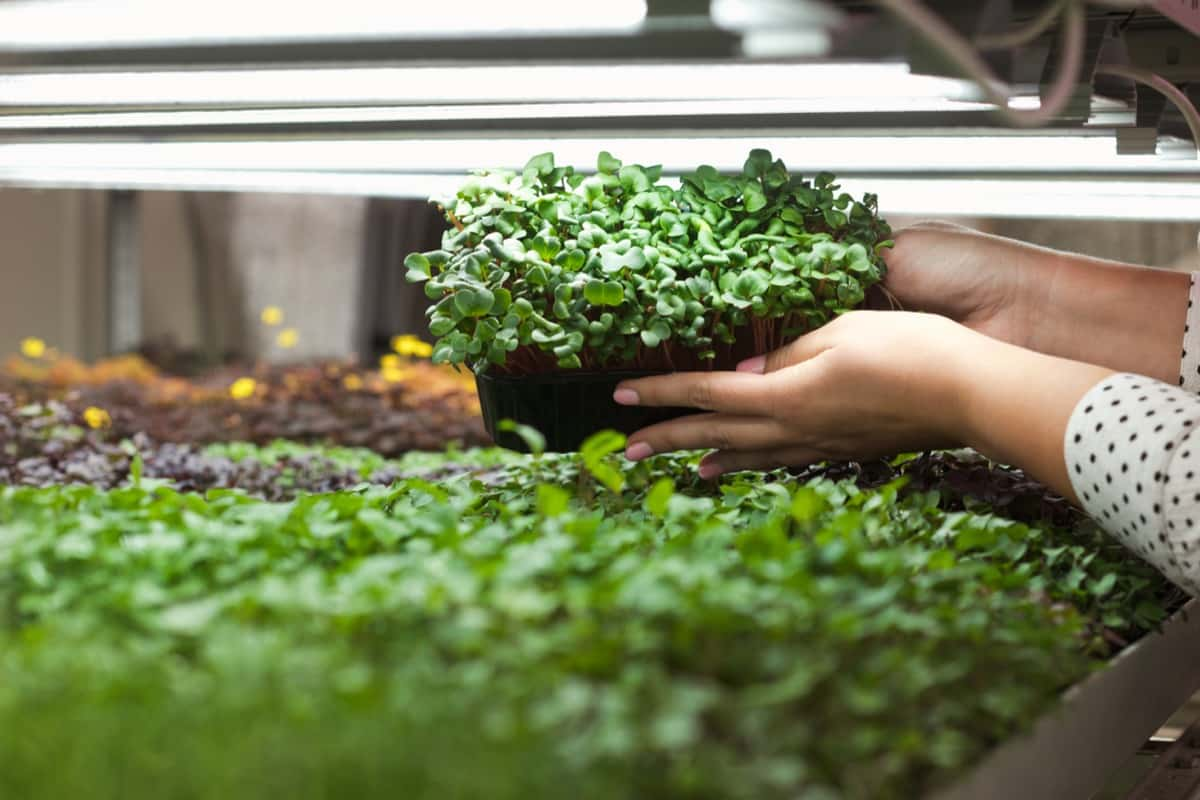Starting a microgreens business can be an exciting and profitable venture. These miniature greens can be grown year-round and have an intense flavor perfect for garnishing dishes or adding to salads.

How to Start a Microgreens Business
What are Microgreens?
Microgreens are tiny, nutrient-packed plants that have been gaining popularity recently. Microgreens are young plants that are harvested shortly after germination.
Benefits to Start Microgreens Business
- Starting a microgreens business requires planning, research, and investment, but it has the potential to be profitable with hard work and dedication. It’s important to find customers interested in buying locally-grown produce and build relationships with them. Testing new varieties and techniques can help improve your product quality over time.
- Microgreens are also easy and quick to grow so you can have multiple harvests throughout the year.
- A microgreens business can be run from home or as a commercial operation, depending on the scale you want to achieve. With minimal equipment and supplies investment, anyone interested in gardening or healthy eating can start their own microgreens business.
- A microgreens business is a small-scale agriculture business that grows plants on a small scale, often using organic methods. Microgreens are vegetables that are small in size with a short growing season. Starting a microgreens business can be both fun and profitable if done correctly.
Investment Required to Start a Microgreens Business
The business investment depends on the scale of your business. Starting a microgreens business requires very minimal investment and time. Start-up costs for a microgreens business range from $1,800 to $4,500.
Tips to Start a Successful Microgreens Business
- Start small – Don’t try to grow too many different types of microgreens at once. Focus on a few varieties that you can manage well.
- Use high-quality seeds – Your seeds’ quality will determine your crops’ quality. Invest in good seeds from reputable suppliers. Use organic seeds from reputable suppliers to ensure high germination rates and healthy plants.
- Keep your growing area clean and organized – Cleanliness is crucial when growing microgreens since they are consumed raw.
- Monitor water and light levels – Provide adequate water and light for optimum growth rates, but be careful not to overwater or expose them to too much light.
- Use social media marketing – Social media has become an important tool for businesses today; create eye-catching photos of fresh harvests with captions about their nutritional value.
In case you missed it: Top 10 Mobile Apps for Home Services in India: Best List

Microgreens Business Requirements
- Starting a microgreens business may seem easy, but certain requirements must be met to succeed. Finding the right location for your farm is one of the most important aspects. A suitable site would have access to water, electricity, and sunlight.
- Another requirement is having the necessary equipment and supplies to grow your crops. This includes trays, seeds, soil mixtures, and lighting systems. Investing in quality tools such as scissors or shears for trimming and harvesting your microgreens is also important.
- In addition, it’s crucial to know about growing techniques and plant maintenance. A good understanding of sanitation practices will also help you maintain high levels of quality control.
Steps to Start Microgreens Business
- The first step is finding customers and getting to know them. This means identifying potential markets for your microgreens and understanding their needs and preferences. Determine your market and find out what types of microgreens are in demand. Research the competition and identify any gaps in the market that you can fill.
- Once you have identified the target audience, it’s time to start growing. You must invest in high-quality seeds, soil, trays, lighting equipment, and other supplies. It’s important to understand which supplies work best for different varieties of microgreens. Many resources can help you learn about different types of microgreens, growing techniques, and best practices.
- Testing new varieties and techniques is also important in building a successful microgreens business. This involves experimenting with different seeds, soil mixes, lighting setups, and other factors to determine what works best for your operation.
- Keeping excellent records is crucial for tracking the success of your business over time. You should keep detailed records of your expenses, sales figures, customer feedback, and other relevant data.
- Keeping it simple is key when starting a microgreens business. Don’t try to grow too wide different varieties at once or get too fancy with packaging or marketing materials until you have established a solid customer base.
- Think about market demand in your area. Research local restaurants and grocery stores interested in purchasing fresh microgreens from you regularly.
- Evaluate if you can invest financially in supplies such as seeds or growing trays and marketing materials like labels or packaging.
- Selling microgreens requires marketing skills and knowledge of local food production and distribution regulations.
Supplies Need to Start Growing Microgreens
- To start a successful microgreens business, you must have the right supplies. These supplies are affordable and can easily be found online or at your local garden center.
- You’ll first need a growing medium such as rockwool cubes, soil, or coconut coir. This will provide the essential nutrients for your plants to grow.
- You’ll also need trays with drainage holes for holding the growing medium and seeds. Light is essential when growing microgreens, so investing in grow lights or setting up a shelf near a sunny window is important.
- Choose a soilless mix that is sterile and free of pests and diseases. Coconut coir, peat moss, and vermiculite are popular choices.
- Plastic trays with drainage holes work well for growing microgreens. You can also recycle plastic clamshell containers from grocery stores.
- Microgreens need plenty of light to grow quickly and produce vibrant colors. A sunny windowsill may be enough for small batches, but most growers use fluorescent or LED grow lights.
- A watering can with a nozzle best keeps the growing medium moist without disturbing the delicate seedlings.
- Seeds are key to this process, too – make sure you choose high-quality organic seeds from reputable sources. A spray bottle for watering your plants can also come in handy.
In case you missed it: How to Start a Small Tractor Dealership in India: License, Investment, Profit, and Requirements

Best Plants to Grown as Microgreens?
The best plants grown as microgreens are Pansies, Tomatoes, Basil, Mint, Sunflowers, Radishes, Potatoes, and Spinach.
Conclusion
Microgreens are tiny, fresh produce plants that are typically grown in containers. They are a great option for small farmers, gardeners, and home cooks who want to add fresh flavor and color to their menus.
- Handicraft Making at Home: A Small Profitable Business Idea
- Pet-Tech Startups: Innovations for Animal Lovers
- Tech Repair Services: Meeting the Demand for Gadget Maintenance
- Maximizing Rewards: Smart Credit Card Habits for Cashback and Points
- Ultimate Guide to Making Money from Goat Milk Business
- How to Start an Agricultural Value Added Product Business
- Value-Added Business Ideas for Greenhouse: The Best Ways to Make Profits with Greenhouse Farming
- How to Make Profits with Organic Country Chicken: Best Strategies for Beginners
- 10 Value-added Business Ideas for Millets: Low-investment and Highly Profitable